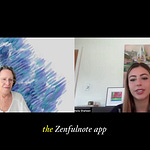When I asked Dr. Connie Zweig about the role of shadow work in the creative process, she shared the story behind her novel A Moth to the Flame: The Story of the Sufi Poet Rumi. Watch the interview above or read about what her answers unfolded below:
It began with a call
Keila: How did this story first come to you?
Dr. Connie:
While I was immersed in reading Rumi’s verses, I had a series of dreams of a figure in a caftan and turban telling a story each night. I began to write it down.
Then a flyer arrived in the mail about a Rumi class. The teacher knew Farsi and took me to a bookstore to read Rumi’s biography in that language. It told the same story that was told in my dreams.
I knew then that I had to write a novel, but I had only written non-fiction. To prepare, I began to take fiction writing classes, study Sufism, and eventually went to see his home and school in Konya, Turkey. After eight years, A Moth to the Flame was published.
There was denial and resistance
Keila: What internal resistance showed up for you along the way?
Dr. Connie:
At first, I tried to ignore my dreams and their insistence that I pay attention. The Resister told me to forget about it. But the dreams persisted. So I began to write them down and take them more seriously.
This is when the first shadow character appeared.
Shadow Character: The Unqualified Writer
Repeating voice: “Who am I to write this? I’m not qualified; I don’t know anything about Islam.”
Feelings: Fear, dread
Sensations: Queasy stomach, tight shoulders
Image: I’m at my computer, shaking my head No!
I used my meditation practice to observe my mind as this shadow character emerged. It wanted to stop me—but “I” recognized it as a part, not who I am. And I became more and more committed.
Working and confronting what was within
Keila: What shadow characters emerged as you began writing?
Dr. Connie:
I sat with the verses of several translators, allowing them to seep in for long days and nights. I read everything in print about him. I traveled to Turkey with a Sufi sheikh and learned Sufi practices.
But I also had to face my ignorance, not only of Islam, but of the projections I carried. I did shadow work around the fears and prejudices I held as an American and as a Jewish person meeting Muslim people in Turkey.
I spent hours sorting through Rumi’s verses to look for patterns and a story arc. At first, I couldn’t see it.
Shadow Character: The Self-Doubter
Repeating voice: “I can’t do this. It’s overwhelming. There’s no pattern, no story.”
Feelings: Anxious, disoriented, sad
Sensations: Tight neck and shoulders, restless body
Image: I’m drowning in water, overwhelmed
The eureka moment of finding the story
Keila: What did the research and incubation stage feel like?
Dr. Connie:
As I steeped in the verses, trying to find a story arc, one day it emerged.
I realized the changing verses through the years reflected Rumi’s shifting consciousness. The evolution of the sheikh into the poet mirrored his journey from ordinary dualistic awareness to awakened non-dual awareness.
My response was paradoxical: excited but skeptical. I needed to keep writing and watch what happened.
Shadow Character: The Discoverer / Skeptic
Repeating voice: “I see it. Can it be real?”
Feelings: Excitement, skepticism
Sensations: Energized, nervous
Image: A light bulb
Nearing the end
Keila: As the book neared completion, did any other shadows appear?
Dr. Connie:
As the book took shape, I grew both excited and nervous. The Unqualified Writer returned, even as I continued to write. I revised and revised, and eventually another shadow character appeared—the one that usually shows up at the end of a project.
Shadow Character: The Perfectionist
Repeating voice: “It’s not good enough. I’ll never know enough about Islam to write this. I’ll never understand Rumi from the inside out. It will never be published.”
Feelings: Fear, grief, dread
Sensations: Numbness, paralysis
Image: Sisyphus rolling the stone up the hill forever
As I romanced this shadow character, I slowly moved toward completion. The dread increased when several editors rejected the book, and the Self-Doubter erupted again.
Then, suddenly, one accepted it.
And my novel was born.
Reflection
Dr. Connie’s creative journey with A Moth to the Flame is a tale of literary perseverance and a map of the inner terrain every artist must walk. Her process required her to confront the unconscious fears, doubts, and voices that arise anytime we create something meaningful.
This is the essence of shadow work: not banishing what shows up, but recognizing its voice and choosing to keep going anyway.
Find A Moth to The Flame here: https://a.co/d/ei1AKtz
With love,
Dr. Connie Zweig and Keila Shaheen
🖤 Thanks for reading Shadow Work to Expand Awareness: a space where inner work meets the outer world through shared prompts, writings, and livestream conversations with Dr. Connie Zweig, Ph.D and Keila Shaheen.
Support our work:
– Get the Zenfulnote App to make inner-work part of your daily life
– Keila’s books: The Shadow Work Journal · The Lucky Girl Journal · The 369 Journal · The Book of Shadow Work · The Light Work Journal NEW! pre-order
– Dr. Connie’s books: Meeting the Shadow · Romancing the Shadow · Meeting the Shadow on the Spiritual Path · The Inner Work of Age– Keila’s website: www.keilashaheen.com
Join the Conversation!
Join our Substack community chat for ongoing discussions, Q&As, and shared insights. + find and save a special image of the prompts above so you can save it and share it with others!












